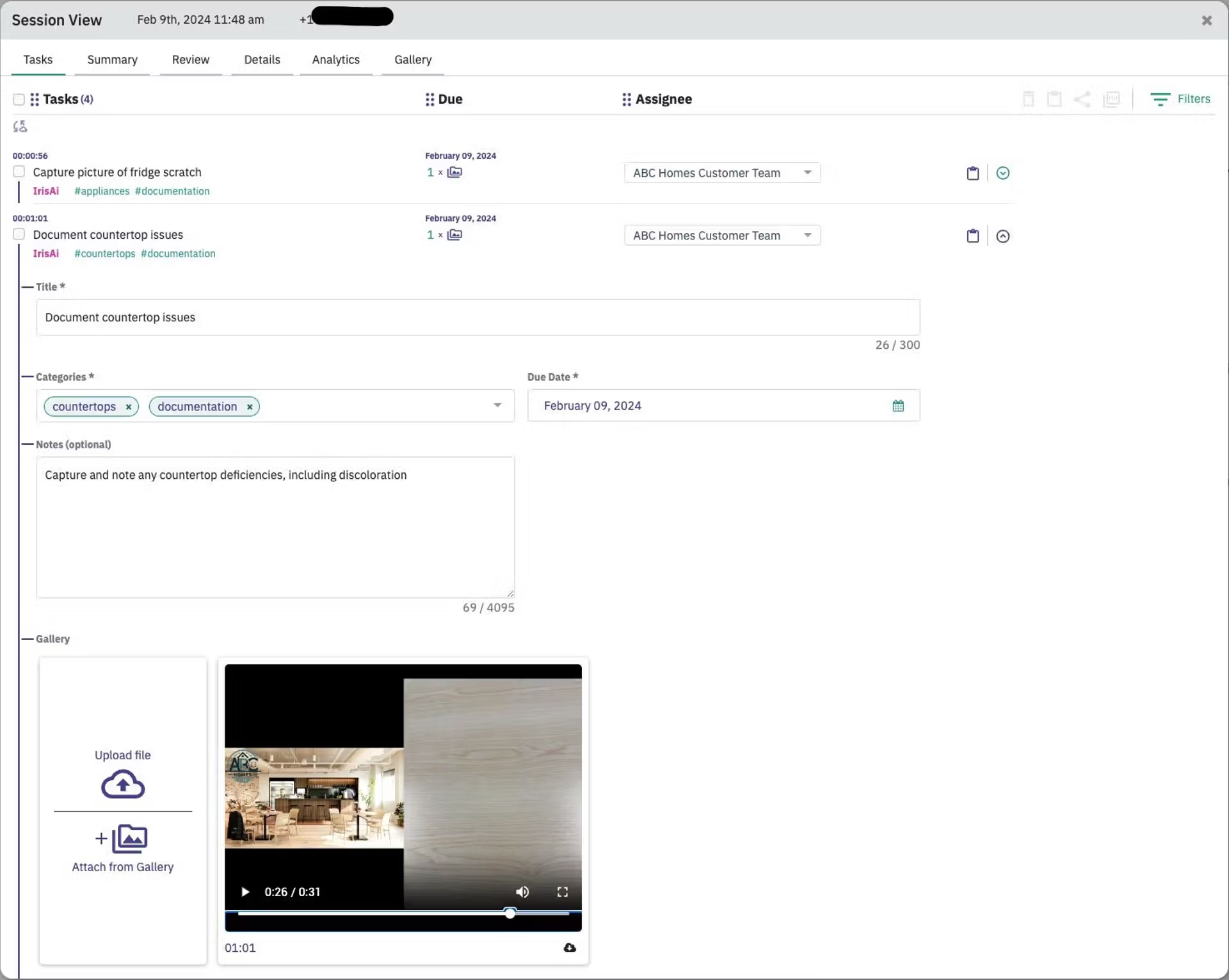If you’re a home builder, we’ll take a guess that your support and warranty intake process involves a team that manually responds to phones, voicemails, online forms, and emails.
If yes, you’re among the majority of home builders who are using a combination of inefficient systems to capture customer support requests. The result is both you and the customer spending an average of 3 touch points to connect, and an additional 4 touch points to understand the problem-before a resolution is even considered or a work-order is created!
It may be time to take a step back and look at the bigger picture. What does your intake process look like today and what is the impact on you and your customers? More importantly, how can it be done better?
Customer: High Touch, High Frustration
The goal of any home builder support team is to address issues quickly and with ease for the customer. This can’t be done unless the problem is captured quickly and efficiently.
Picture this: A customer sees water leaking in their basement. They call the support phone number listed on the home builder’s website (touch 1) . They don’t have time to wait on hold since they’re in back to back meetings and decide to select the option to leave a message instead (touch 2). They’re a little panicked, so they also decide to fill out an online support intake form and attach a picture of the problem (touch 3).
We’re 3 touch points in, yet not that much closer to solving the problem since the home builder isn’t even aware yet that a problem exists, and once they do, they’ll likely need more information. The experience for the customer is full of friction and frustrating, at best.
For Support Teams – High Touch, High Effort
Regardless of the communication method, support teams need to staff manual resources to respond to the incoming phone calls, emails, online forms, and support tickets. Those manual resources are costly, and even more so when they aren’t operating efficiently. This also translates into longer overall resolution times. Let’s use the same scenario mentioned earlier to see how support teams are impacted by inefficient intake.
While the Support Team Agent was busy handling another call, they were unable to take our customer’s phone call about the leaking basement. The Agent listens to the voicemail and calls back, leaving another voicemail – telephone tag begins! (touch 1 = 5 mins). The agent reviews the online form and replies via email asking for more information (touch 2 = 10 minutes). After receiving additional photos and details about the problem over email, the agent calls again to schedule an onsite visit (touch 3 / 20 mins). We’re 3 touch points in and 30 minutes spent per customer (over the course of 1-2 days), yet the Support Team still doesn’t have a full understanding of the problem.
In addition to the impacts stated earlier, there’s a larger problem that arises from operating inefficiently in the world of warranty and support – reputational risk. Reputation is built around delivering on promises. A high-touch and inefficient intake sets you up for failure at the onset by creating a difficult experience for the customer and compromising the quality and organization of the data provided – data that you ultimately rely on to deliver resolution. So what can we do about it?
Solutioning with Voice & Visual Remote Assistance
Imagine a world where customers can easily show you the issue they’re facing, while consolidating emails, forms, texts, and phone calls into one data-rich experience. IrisCX provides a web-based voice and visual solution that can be initiated by your team, scheduled or by the customer at any time, at their convenience. With guided prompts, transcription capture, and AI automated tasks, IrisCX captures all the details of a simple or complex home support issue. It can also help to assess the urgency of a support request before sending out a costly (and hard to find) crew.Automation and AI are revolutionizing the home builder warranty and support process, making it more efficient and user-friendly.
“Make it easy for me. Please!” — Homeowner
With the integration of visual remote assistance technologies, the coordination, interaction, and follow-up tasks that currently require high effort and multiple touch points can be significantly streamlined. This transformation not only reduces the operational costs associated with manual interventions but also enhances customer satisfaction by providing quicker, more accurate resolutions to their issues.
For instance, when a customer encounters a problem, such as a leak in their basement, they can immediately initiate a visual remote session through a platform like IrisCX. This session would allow them to show the issue in real-time to a support agent, bypassing the need for multiple calls, emails, or messages. The AI component of the system can further analyze the visuals provided by the customer to pre-assess the severity and nature of the issue, enabling the support team to prioritize and respond more effectively.This direct and efficient method of problem-reporting and assessment drastically reduces the time spent in understanding and diagnosing issues, leading to faster resolution times.
Moreover, automation can play a crucial role in follow-up work. Once a problem is diagnosed, AI can automatically generate and schedule work orders, notify the relevant teams or contractors, and even follow up with customers to ensure their issue has been resolved satisfactorily. This not only ensures that no customer falls through the cracks but also that the support process is as seamless as possible. By leveraging AI and automation in conjunction with visual remote assistance, home builders can transform their warranty and support services from a high-touch, high-frustration process into a streamlined, efficient, and customer-friendly experience.
Set up your customers for success with an intake solution that is easy to access, without having to clog up the 1-800 line. Customers receive an SMS with a join link. Then they’ll follow on-screen prompts to ensure they know what information to capture.
Using video to intake and qualify support requests translates into less touch points and back and forth communication to understand the problem. This all contributes to reduced drive time, money saved, quicker resolution times, and a better experience for your customers. It’s time to reshape the way we capture support requests and build better experiences (not just better homes).
Want to learn more about how IrisCX can improve your support and warranty intake?
Contact us below!




